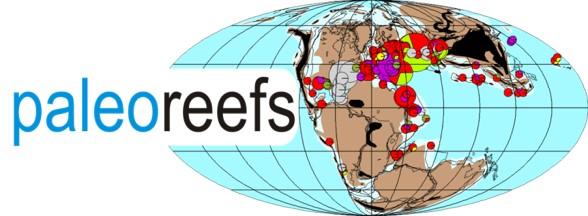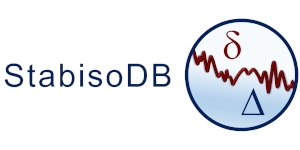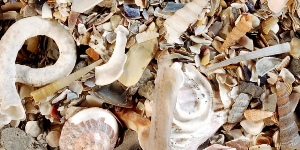Databases
PaleoReefs Database (PARED)
 The PaleoReefs Database (PARED) was established by Wolfgang Kiessling in 1995 and was developed through projects funded by the DFG and the VolkswagenStiftung to improve understanding of the evolution of biogenic reefs. It contains biological, petrographic and paleogeographic records of 4000+ Phanerozoic reef systems. The relational database is searchable with the online interface and the distribution of fossil reef systems is available on paleogeographic maps. The denormalized version of the database can be downloaded directly to R with the chronosphere. Registered users can enter new data.
The PaleoReefs Database (PARED) was established by Wolfgang Kiessling in 1995 and was developed through projects funded by the DFG and the VolkswagenStiftung to improve understanding of the evolution of biogenic reefs. It contains biological, petrographic and paleogeographic records of 4000+ Phanerozoic reef systems. The relational database is searchable with the online interface and the distribution of fossil reef systems is available on paleogeographic maps. The denormalized version of the database can be downloaded directly to R with the chronosphere. Registered users can enter new data.
Ancient Reef Traits Database (ART)
 The Ancient Reef Traits Databaseis a specimen-based compilation of reef-builder traits, focusing primarily on scleractinian coral. The purpose of this novel database is to better understand the extinctions and evolution of reef-builder taxa. It is getting developed as a part of the DFG project “coralTrace”.
The Ancient Reef Traits Databaseis a specimen-based compilation of reef-builder traits, focusing primarily on scleractinian coral. The purpose of this novel database is to better understand the extinctions and evolution of reef-builder taxa. It is getting developed as a part of the DFG project “coralTrace”.
Stable Isotope Database for Earth System Research (StabisoDB)
 The StabisoDB was created to fulfill the community’s long desire for a relational database to facilitate application of stable isotope data to studies of the Earth system. The database was established by Michael Joachimski and Ethan Grossman. The material is currently under publication.
The StabisoDB was created to fulfill the community’s long desire for a relational database to facilitate application of stable isotope data to studies of the Earth system. The database was established by Michael Joachimski and Ethan Grossman. The material is currently under publication.
Chronosphere
 The in-development framework provides easy access and data provision for scientific analyses that depend on changing data. A description of the available available data items can be found on the project website. Assets related to the chronosphere can be found on its GitHub Organization page.
The in-development framework provides easy access and data provision for scientific analyses that depend on changing data. A description of the available available data items can be found on the project website. Assets related to the chronosphere can be found on its GitHub Organization page.
Catalogue of the palaeontological collection
 Our palaeontological collection comprises ~90,000 objects, mainly collected from the local area. It consists primarily of Jurassic marine fossils and Pleistocene vertebrates from the Franconian cave deposits, with a large part from the excavation at ‘Hunas’. A subset of the collection (approximais available as an online digital catalogue, which can be searched online. The museum collection of the FAU contains approximately 4800 fossil specimens, which can be browsed using our digital catalog.
Our palaeontological collection comprises ~90,000 objects, mainly collected from the local area. It consists primarily of Jurassic marine fossils and Pleistocene vertebrates from the Franconian cave deposits, with a large part from the excavation at ‘Hunas’. A subset of the collection (approximais available as an online digital catalogue, which can be searched online. The museum collection of the FAU contains approximately 4800 fossil specimens, which can be browsed using our digital catalog.
